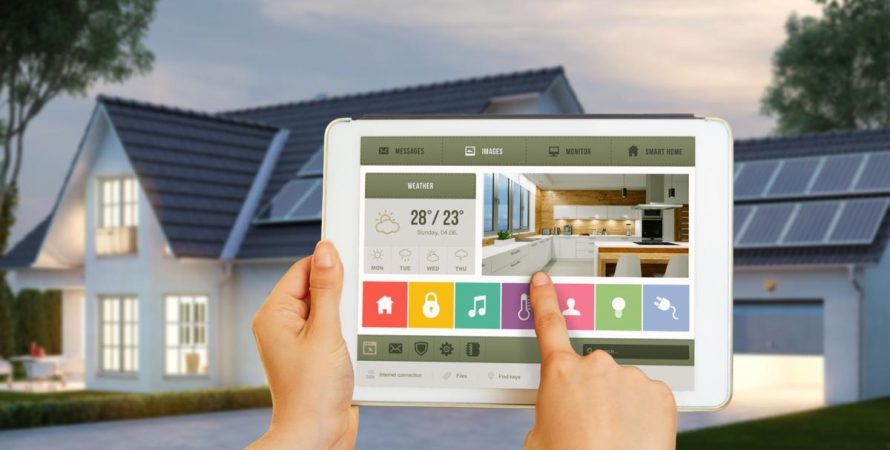As new technology makes the world smarter, our homes are being transformed by gadgets and fully integrated home automation systems designed to optimize our domestic lives. And yet even now when most of us are familiar with the Nest thermostat and plug-and-play smart lighting, the phrase “home automation” can conjure up futuristic visions of helper robots and talking tea kettles. Are wireless home automation systems just a fad or here to stay? The quick answer is that our homes will continue to get smarter with each passing year — with 82.5 million systems in the U.S. by 2021. Here’s why you should get on board:
1. It’s Truly Green Tech
One of the most obvious green benefits of smart home technology is that it compensates for human error. The EPA has said that using a schedule coupled with temperature settings on a programmable thermostat can reduce energy usage by 10 to 30 percent, but most households don’t use standard programmable thermostats correctly. Forgetting to the turn off the lights is common, but even more common is neglecting the power drain from appliances and electronics that draw electricity even when not in use. Home automation empowers us to be green without having to change our behavior.
Home automation systems can ensure your home is comfortably warm or cool in the most efficient way, monitor your overall energy usage and alert you when adjustments are needed, turn off lights in empty rooms, sense when a door or window has been left open, toggle appliances on or off to avoid phantom energy usage and track the impact of the system itself so you can make changes to your home’s energy usage in a data-driven way.
2. There Are Clear Savings
Energy is expensive and a significant amount of home energy costs go to heating and cooling. Programmable thermostats are one solution, but as noted above, they’re only as good as the human programming them. On the other hand, learning thermostats like the Nest can save people 15 percent or more on their energy bills without a lot of effort. Home automation systems can also lower the temperature on water heaters when no one is home, identify the appliances drawing energy when not in use and prevent you from paying to light empty rooms.
The savings aren’t just related to energy, though. Many home insurance companies are beginning to offer discounts to homeowners with home automation security systems that can sense things like windows or doors that have been forced open or broken, broken water pipes and leaks, smoke and carbon monoxide alarms that have gone off, and other issues that can lead to major property damage.
3. It’s Easy to Love
There’s plenty of eco-friendly tech out there and money-saving gadgets abound, but what sets wireless home automation apart is that it actually makes life better. A learning thermostat makes life more comfortable, as does coming home to a kettle that has only just whistled. Being able to toggle lights on and off from anywhere gives us a sense of security. Knowing you can keep an eye on your pet from the office makes leaving for work in the morning easier.
Some of the best benefits to home automation security systems are safety and peace of mind. You can head out on vacation knowing that your home is protected and monitored in the event of a fire or home invasion. If you have to rush out the door in the morning and forget to lock your doors, you can easily lock them or close your garage door from your smartphone. You can turn lights on before you get home so you don’t walk into a dark house. It’s benefits like these that are driving the mainstream, long-term adoption of home automation systems, which will lead to lower prices.
The Future of Home Automation
At one time, wireless home automation systems were out of reach for the majority of consumers. Now there are off-the-shelf and fully integrated options for every budget. Those who are curious to test the benefits (or the boundaries) of smart home technology can now experiment without breaking the bank.
The demand for smart home accessories and integrated systems is growing year by year, with Berg Insight predicting that the market will be worth $12.8 billion by 2017. Millions of homebuyers are looking for smart features in newly built homes and retrofitting older homes with DIY smart home kits.
Not only will less-expensive piecemeal systems be hitting the market in the near future, but also better ones that can learn faster and need less oversight from us. The truly affordable automated home is coming. Until that time, there are a few great reasons to explore the offerings currently on the market, like these three smashingly simple home automation systems.









Vitalik Proposal Could Turn Ethereum Staking Into $160 Million Industry